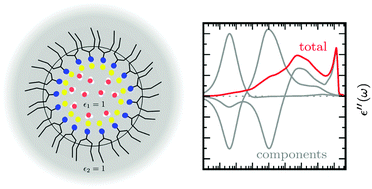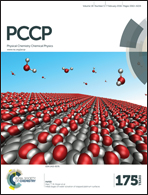Dielectric depolarisation and concerted collective dynamics in AOT reverse micelles with and without ubiquitin
Abstract
In this computational study we present molecular dynamics (MD) simulations of reverse micelles, i.e. nano-scale water pools encapsulated by sodium bis(2-ethylhexyl) sulfosuccinate (AOT) and dissolved in isooctane. Although consisting of highly polar components, such micro-emulsions exhibit surprisingly low dielectric permittivity, both static and frequency-dependent. This finding is well supported by experimental dielectric measurements. Furthermore, the computational dielectric spectra of reverse micelles with and without the polar protein ubiquitin are almost identical. A detailed component analysis of our simulated systems reveals the underlying mechanism of the observed dielectric depolarisation. While each component by itself would make a remarkable contribution to the static dielectric permittivity, mutual compensation leads to the observed marginal net result. This compensatory behavior is maintained for all but the highest frequencies. Dielectric model theory adapted to the peculiarities of reverse micelles provides an explanation: embedding a system in a cavity engulfed by a low dielectric medium automatically leads to depolarization. In this sense experiment, simulation and theory are in accordance.


 Please wait while we load your content...
Please wait while we load your content...